Getting around a new city can be overwhelming. Foreign languages, jet lag, cultural differences… these all can add up to a frustrating attempt at taking public transportation. Recently, Point Me To The Plane Destinations Expert Sarah Johnson received a question about getting around using the Paris Metro system.
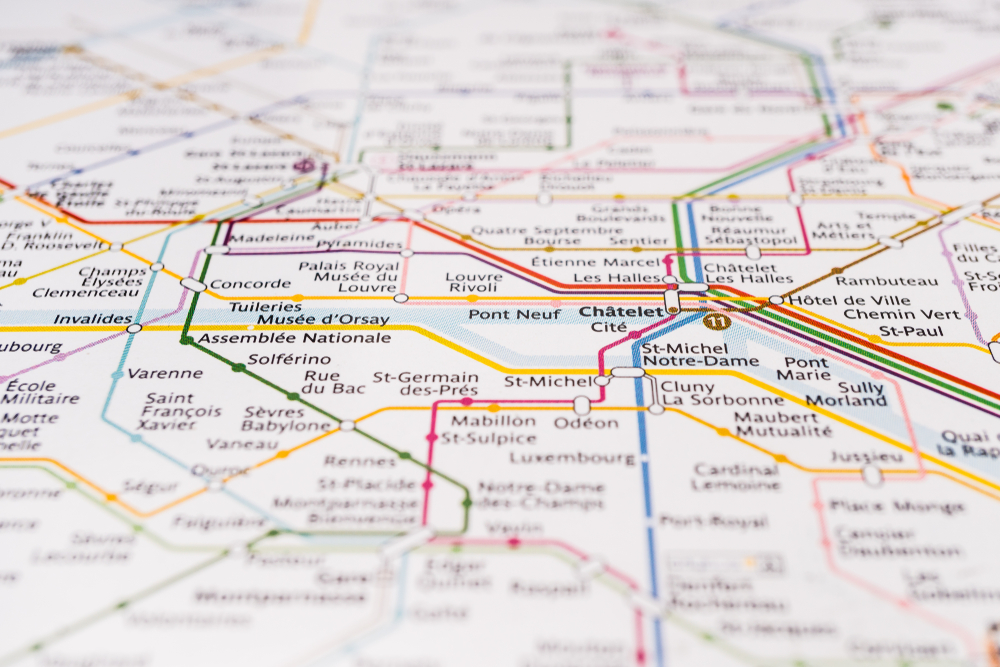
Question — ‘Will I have trouble navigating the Paris Metro?’
Dear Sarah,
I’m heading to Paris in a few weeks. I need to take the train from Charles de Gaulle Airport to get to my hotel in Saint Germain, and then I plan to use the Metro to get around. I hear the Paris Metro system is easy to use, but I don’t speak ANY French. Will I have trouble?
Thank you, Cam
Answer — ‘Know where you’re going, and you’re likely to find it’
Hi Cam, great question! In general, the Paris Metro is like any other metro. You purchase a ticket, scan or swipe it at a turnstile, and keep it to do the same at the exit. Some lines branch out, typically not within the main tourist zones, but if you’re going further afield just make sure you get on the right train. Signage is in both French and English and the voice announcements are too. There’s well-lit signage when you pull into a station. I always make sure I know the two stops prior to mine, so I can pay attention as I get close.
Paris’s metro is managed by the RATP, the regional transportation authority in Paris. In addition to the underground system, the Paris Metro system also includes the RER commuter trains and buses, although the ticketing can be a bit tricky if you don’t know what you need to buy. The below information covers an overview of the system, what tickets to buy, and how to navigate the Paris Metro System.
Choosing and Buying Metro Tickets
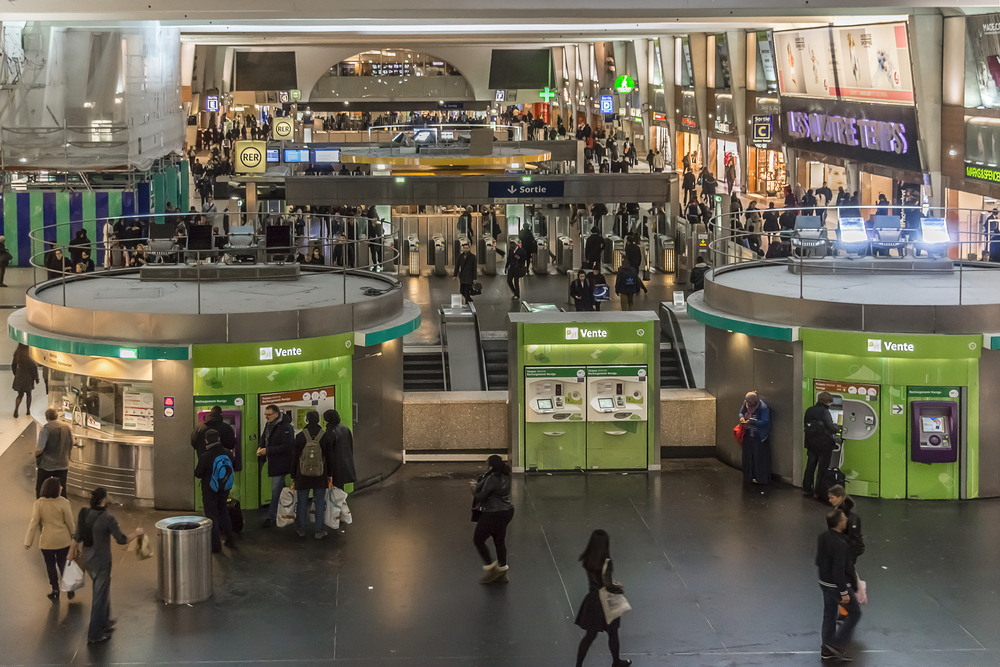
Kiev.Victor / Shutterstock.com
To get around Paris by Metro, you have a few ticketing options. The first is to purchase a single ticket every time you ride. These are around €2. A single ticket allows you to transfer between the Metro and RER but NOT the tram or bus.
It’s also possible to purchase a carnet (pronounced “karnay”), or book of ten tickets. This is great for groups who need to share tickets, or for those who need several tickets over the course of a few days. Each ticket provides a single use. Carnets are also available at a reduced child price for children under the age of ten.
You can also purchase a day pass, known as a Ticket Mobilis. This is valid for the entire day, but does not permit travel to the airport. The RATP has a very detailed website with more information on ticket options for visitors.
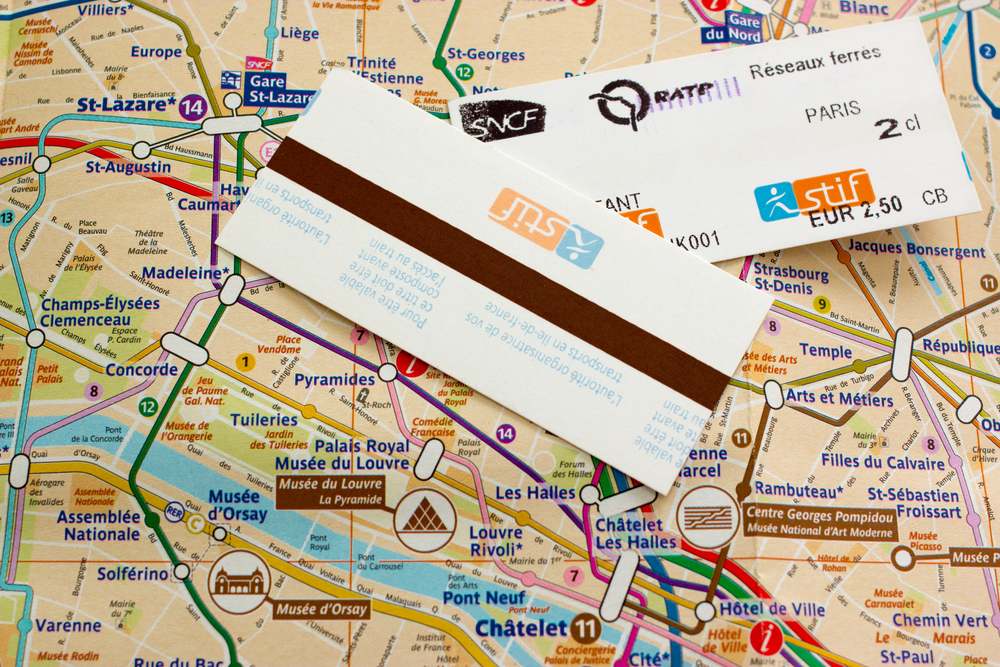
Sebastien DURAND / Shutterstock.com
Be sure to keep your ticket as you need it to exit the stations. If you purchase from a kiosk, you will need coins or a chip/pin card. If you only have bills, you must purchase from a ticket seller. Keep in mind that some stations don’t have ticket sellers.
Another option when it comes to tickets is to purchase the Paris Visite Pass. This allows unlimited travel on all Parisian transport networks as well as discounts on tickets to some of the city’s attractions. It is available for one, two, three, or five days and there are two zones to choose from: Paris (zones one to three) and Paris and the Île-de-France region (zones one to five, including airport connections, Versailles, and Disneyland Paris). Visitors to Paris can purchase the Paris Visite pass online, at a ticket seller, through their travel advisor, or at an automated kiosk.
Navigating the Metro in English
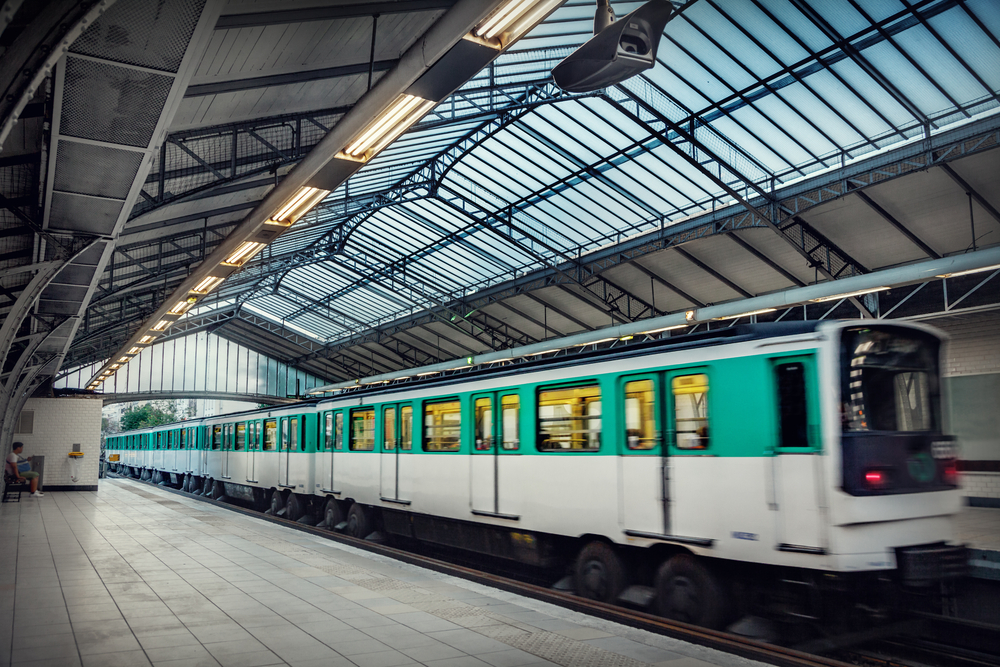
Train and metro lines in Paris are named by their two end stations. A map will assist in directing you to the correct line, as (in some places) you cannot turn around once you’ve gone the wrong direction without paying again. There are some good apps that will help you too; the RATP has one that works especially well. Just make sure you’ve got international data roaming on your phone or can switch the app to offline usage! I also stand by the old trick of a photo of a map that I can zoom in on. In a pinch, without wifi, it works just as well!
As Europe’s second-largest metro system, the Paris metro system extends over 214 kilometers and has over 300 stations along 14 lines. It is also one of the world’s oldest train systems, having been opened in 1900. Luckily, Paris has renovated the metro several times since it’s opening, making it easier and easier to use for non-French speakers.
Signage is both French and English, as are voice announcements. The word “sortie” in French means exit, and you will see this along with an arrow indicating the direction of the exit. Trains are new and bright. During crowded times, keep a close eye on your bag.
How to Read the Paris Metro Map

The Paris Metro has 14 lines, 1-14 with two “bis” (3b and 7b) lines. These are also color-coded. The metro system runs from 5:30am to 12:40am during the week and 5:30am to 1:40am on weekends. Some lines might have slightly different schedules. If you are heading out for the evening, ask at the hotel to find out the last train.
Some of the largest and busiest stations in Paris include Châtelet des Halles, where riders can connect to five metro lines and three RER lines, Gare du Nord and the other train stations, and La Defense. Bastille, Bibliotheque, and Republique round out the top ten busiest.
A quick Google map directions search will let visitors to Paris know the correct trains to take; a friendly Paris Metro attendant can also assist.
Insider tips for using the Paris Metro
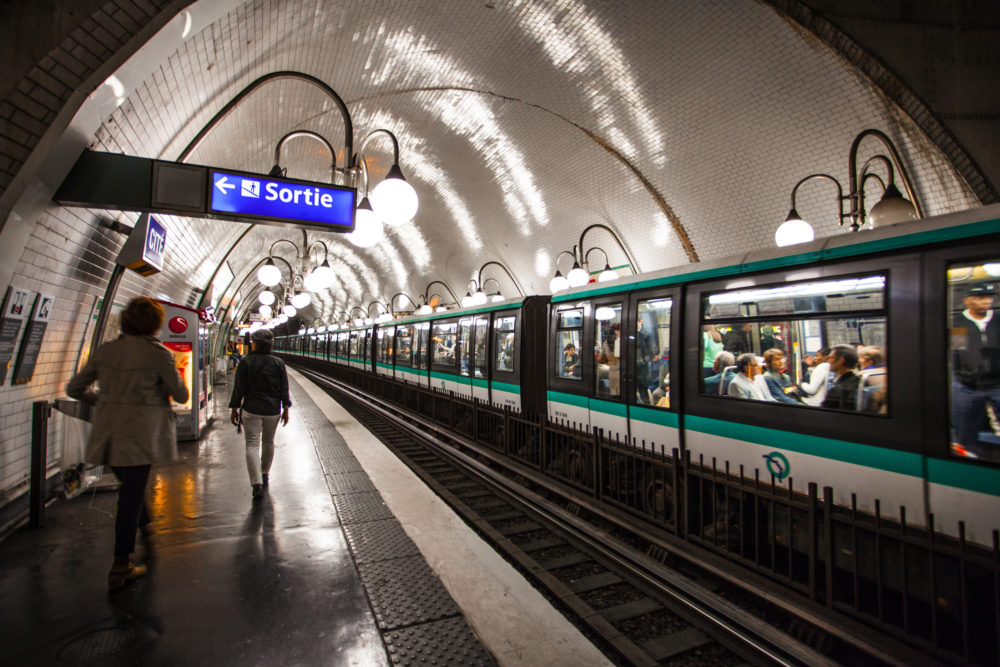
Line 1 is the oldest line and also the most used as it links the largest number of major monuments. Crossing Paris from north to east, Line 4 is the only metro line to connect to all other metro and RER lines. Other metro lines visitors might use include Lines 2, 9, and 13. For a spectacular view of the Eiffel Tower from the train, ride Line 6 between Passy and Bir Hakeim.
Chances are, most visitors will use a number of different lines depending on where their hotel is and what they plan to see in Paris. Over six million people ride the Paris Metro every day, so as a result it’s best to avoid lines 1, 4, and 13 at rush hour.
Getting around Paris by the Paris Metro is very easy. I personally think it’s just like any other subway system. Each station has its name in large print and the voice announcements are in both French and English. As long as you pay attention to the stops and know the two before yours, you’ll be fine!
**
Cam, I hope that answered your question about getting around Paris. Have a safe trip, and enjoy the City of Lights!
Sarah is a luxury travel advisor and avid traveller. When she isn’t writing for Point Me To The Plane you can find her crafting custom itineraries for clients or exploring the far reaches of our wonderful planet. Read more about her adventures at The Girl With the Map Tattoo.
The responses below are not provided or commissioned by the bank advertiser. Responses have not been reviewed, approved or otherwise endorsed by the bank advertiser. It is not the bank advertiser's responsibility to ensure all posts and/or questions are answered.
6 comments
Agree with all the above.
In the past I have had issues using credit cards to purchase tickets (usual issue in Europe, you are asked for a PIN, even if the card is swipe&sign). Not sure if problem still remains after switch to chip cards?
Ben, I think it depends a lot on where you are in Europe. I use my US debit card abroad because of the no-foreign-transaction fee, but I have in the past used various credit cards. 9 out of 10 times they have worked, if it hasn’t I just switch cards and try another. However, I have a pin number for all of my cards. One exception: in Alicante, Spain, the ticket machines only took the tap-on cards! There wasn’t even a place for the chip cards. That surprised me, since the tap cards are still relatively new to the market.
It’s been about a year and a half since I was there, but a chip and pin card is NOT needed for the Metro. I believe that you do need a card with a chip in it (not just a swipe), but no pin was necessary.
We visited a couple of countries while we were there, and I don’t recall needing a pin anywhere along the way, a card with a chip in it was always enough. Of course, there might be some individual payment systems in place that require it, so your milage may vary.
I’ve had to use a pin in some places in Europe, but I did ask someone who was in Paris last month. He used his US credit card in one of the Metro ticket machines and did not need to use a pin. The swipe functions are slowly being phased out, I think.
I am Parisien (so living in Paris)
Good article
To give you some additional advices
I use generally Google Map to have a good idea of the line(s) I have to take and which exit I have to use (there is numbers and google map give you the best choice according to your destination)
The best solution used by the resident (if you don’t have a Navigo pass which is my case) it’s to buy a Carnet of 10 tickets which is the most economical solution. Other advantage there is no limitation date (you can still use them 2 or 3 years later. If they have been demagnetized (very likely) you will just have to see an RATP employee at a metro station desk he/she will replace your ticket by a new one.
With a ticket remember as well that you can make correspondences (during 2h for metro 1h30 for bus&tram) between Metro/Metro, Metro/RER (inside Paris zone), bus/bus, bus/tramway but NOT between metro/bus or metro/tramway (a shame – you will have to use another ticket).
Buying a unique ticket in the bus is the most expensive. better to go on the machine of the subway’s stations and again if you buy 10 tickets it’s the best price.
One very important tricky point, a huge number of Tourist and Parisien are caught with that: If you go to the metro station La Défense, Terminus of the Line 1, as it’s the same exit of the RER AND that RER station is consider outside Paris zone your Metro ticket is NOT valid !!! My wife once took an fine due to that and NOBODY explain or alert you on that. It’s completely ridiculous as this station is on the metro map. We call that in France an hide tax. In such case either you buy a specific ticket or you left just one station before “Esplanade de La Défense ” and then walk for 5/8 mm by feet.
Hope it will helps
Have a good time in Paris
As an American who spends 25% of the year working in Paris and has “humble” French language skills I would offer the following thoughts:
1.) Navigating the Parisian metro system and RER (specifically from CDG or Orly Airports to City Center are pretty straighforward and easy (except during a strike as we are currently experiencing), although be aware that you won’t understand 95% of the names that are announced on the train or many of the announcements either…
2.) While Google Maps can be useful for understanding your routing, I strongly recommend downloading the RATP app (available in English) to have more detailed timetables and routing (including RER, metro, & buslines) and is particular useful in seeing if the status of each line and whether there are stoppages or delays.
3.) if you plan to be in the Paris-area for more than 2-3 days I would strongly recommend looking into purchasing a NAVIGO pass. While some people will say it is only for residents, the card itself (and the RATP website) state that anyone can purchase. For only 22 Euros per week you have unlimited access to the RER, Parisian Metro, and public buses. That can pay for itself quickly as RER passes from the airport to the city can be 13 Euros each way, and individual trips on the Metro can be 1-2 Euros. To get a NAVIGO pass at the airport (CDG), you will need a passport picture (There is a kiosk next to the RER platform at CDG airport which charges 5 Euros for a picture, or you can bring your own from home) and then you can go to the ticket office right across the way (next to the RELAY store) to purchase your NAVIGO pass (most all employees at the ticket office can speak enough English to handle these request with ease).
Good luck and enjoy Paris!